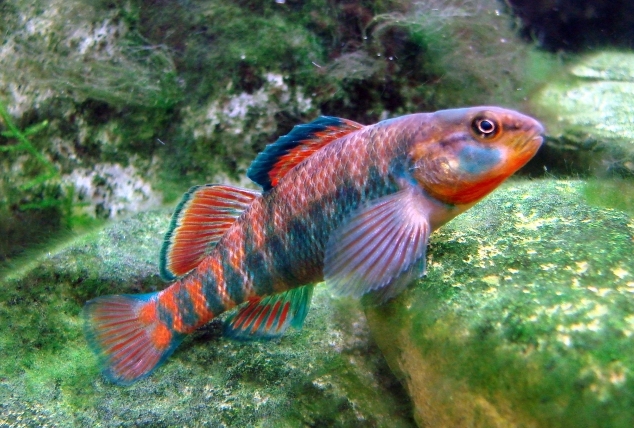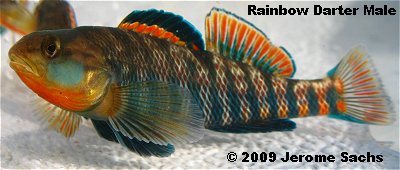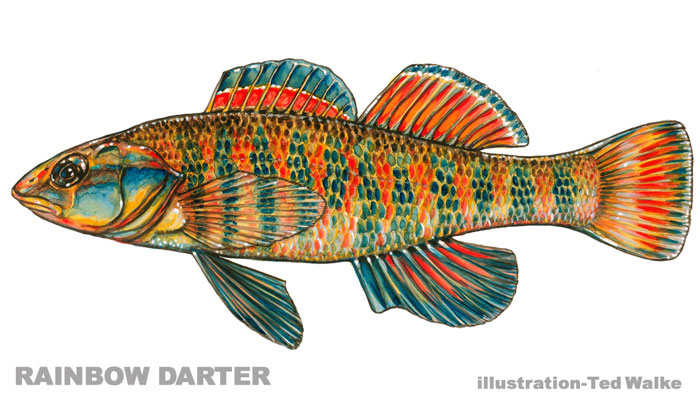
Etheostoma caeruleum
FAMILY
Percidae
TAXONOMY
Etheostoma caeruleum Storer, 1845, Fox River, Illinois, United
States. No subspecies are recognized.
OTHER COMMON NAMES
German: Regenbogen-Springbarsch.
PHYSICAL CHARACTERISTICS
Maximum total length 3 in (7.7 cm). Brownish orange fish
with about a dozen vertical, green bands on the sides of its
body and green markings on its face. It has two dorsal fins.
DISTRIBUTION
Eastern North America from southern Ontario, Canada to
Mississippi and Louisiana, and from Minnesota to West Virginia
in the United States.
HABITAT
Bottom-dwelling, freshwater fishes that inhabit the swift currents
of creeks, as well as average-to-small rivers.
BEHAVIOR
Solitary, stations in the lee of rocks as it moves over the bottom
in search of food. Individuals are very wary and seek shelter
among rocks at the slightest disturbance.
FEEDING ECOLOGY AND DIET
Feeds primarily on crustaceans and invertebrates, but also eats
fish eggs and larvae. Feeding can involve suction, in which they
draw water and prey into their mouths, or diving head-first
toward sandy and gravely substrate after prey.
REPRODUCTIVE BIOLOGY
Males become more brightly colored during breeding season,
which occurs in the spring. Females wait in slower waters of a
stream, half-buried in the substrate, while males enter stream
riffles. As a female approaches the spawning site, a male swims
up, following her closely and defending her from any other interested
males. He continues to maintain this “moving territory”
until mating occurs. During mating, males align
themselves next to the female and spawn while both vibrate.
Females typically lay three to seven eggs at a time, but spawn
multiple times, sometimes laying up to 1,000 eggs per season.
Females typically bury their eggs, which hatch in 10–12 days.
They reach sexual maturity at one year.
CONSERVATION STATUS
Not listed by the IUCN.
SIGNIFICANCE TO HUMANS
None known.
Photo Gallery of - Rainbow darter





 Animalia Life
Animalia Life